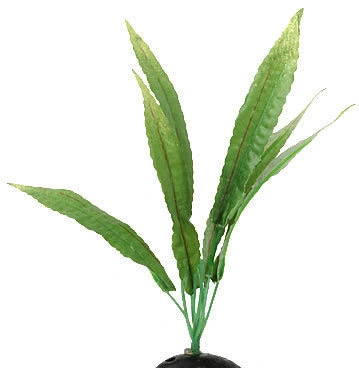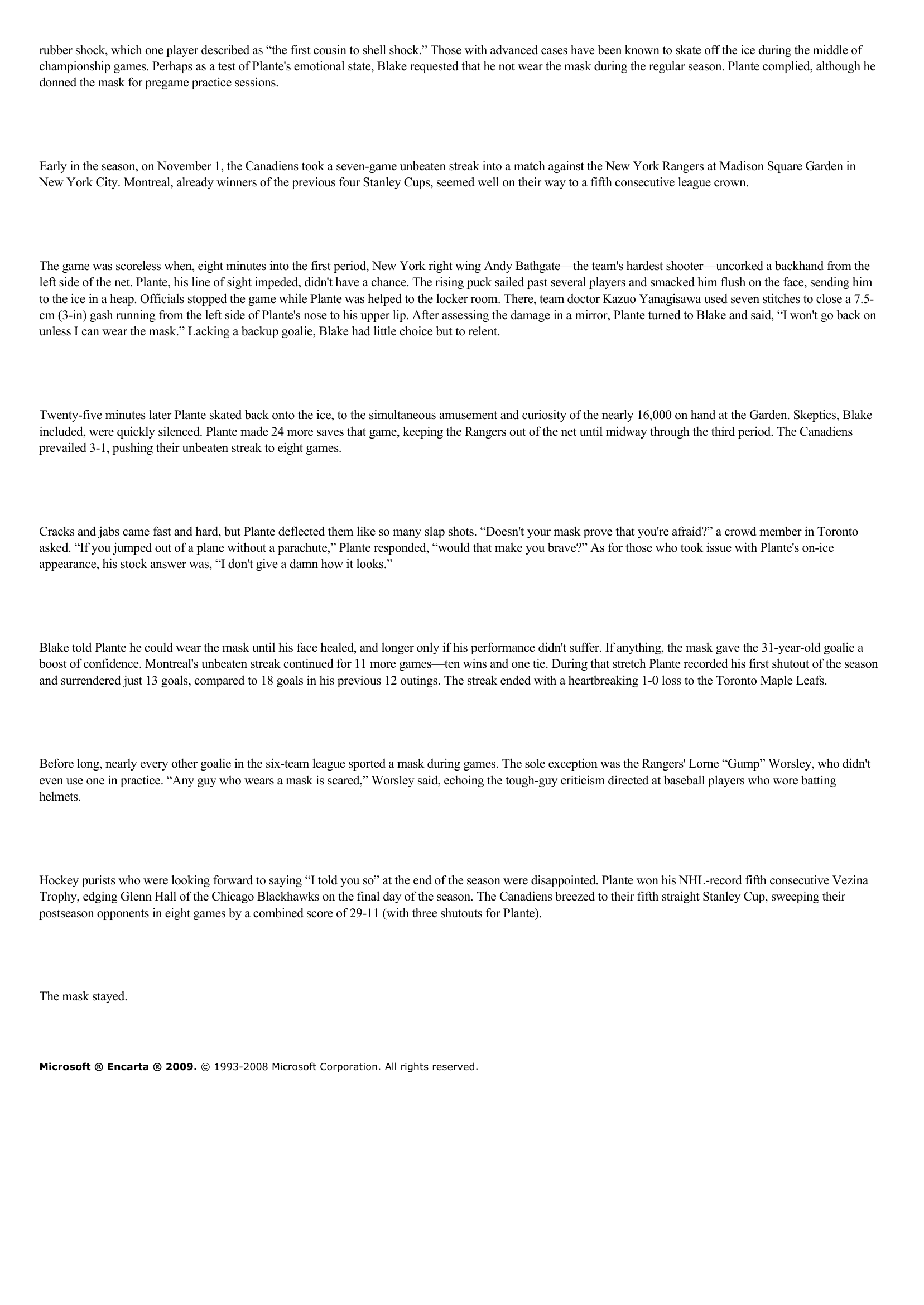Plante First Goalie to Wear a Mask.
Publié le 14/05/2013
Extrait du document


«
rubber shock, which one player described as “the first cousin to shell shock.” Those with advanced cases have been known to skate off the ice during the middle ofchampionship games.
Perhaps as a test of Plante's emotional state, Blake requested that he not wear the mask during the regular season.
Plante complied, although hedonned the mask for pregame practice sessions.
Early in the season, on November 1, the Canadiens took a seven-game unbeaten streak into a match against the New York Rangers at Madison Square Garden inNew York City.
Montreal, already winners of the previous four Stanley Cups, seemed well on their way to a fifth consecutive league crown.
The game was scoreless when, eight minutes into the first period, New York right wing Andy Bathgate—the team's hardest shooter—uncorked a backhand from theleft side of the net.
Plante, his line of sight impeded, didn't have a chance.
The rising puck sailed past several players and smacked him flush on the face, sending himto the ice in a heap.
Officials stopped the game while Plante was helped to the locker room.
There, team doctor Kazuo Yanagisawa used seven stitches to close a 7.5-cm (3-in) gash running from the left side of Plante's nose to his upper lip.
After assessing the damage in a mirror, Plante turned to Blake and said, “I won't go back onunless I can wear the mask.” Lacking a backup goalie, Blake had little choice but to relent.
Twenty-five minutes later Plante skated back onto the ice, to the simultaneous amusement and curiosity of the nearly 16,000 on hand at the Garden.
Skeptics, Blakeincluded, were quickly silenced.
Plante made 24 more saves that game, keeping the Rangers out of the net until midway through the third period.
The Canadiensprevailed 3-1, pushing their unbeaten streak to eight games.
Cracks and jabs came fast and hard, but Plante deflected them like so many slap shots.
“Doesn't your mask prove that you're afraid?” a crowd member in Torontoasked.
“If you jumped out of a plane without a parachute,” Plante responded, “would that make you brave?” As for those who took issue with Plante's on-iceappearance, his stock answer was, “I don't give a damn how it looks.”
Blake told Plante he could wear the mask until his face healed, and longer only if his performance didn't suffer.
If anything, the mask gave the 31-year-old goalie aboost of confidence.
Montreal's unbeaten streak continued for 11 more games—ten wins and one tie.
During that stretch Plante recorded his first shutout of the seasonand surrendered just 13 goals, compared to 18 goals in his previous 12 outings.
The streak ended with a heartbreaking 1-0 loss to the Toronto Maple Leafs.
Before long, nearly every other goalie in the six-team league sported a mask during games.
The sole exception was the Rangers' Lorne “Gump” Worsley, who didn'teven use one in practice.
“Any guy who wears a mask is scared,” Worsley said, echoing the tough-guy criticism directed at baseball players who wore battinghelmets.
Hockey purists who were looking forward to saying “I told you so” at the end of the season were disappointed.
Plante won his NHL-record fifth consecutive VezinaTrophy, edging Glenn Hall of the Chicago Blackhawks on the final day of the season.
The Canadiens breezed to their fifth straight Stanley Cup, sweeping theirpostseason opponents in eight games by a combined score of 29-11 (with three shutouts for Plante).
The mask stayed.
Microsoft ® Encarta ® 2009. © 1993-2008 Microsoft Corporation.
All rights reserved..
»
↓↓↓ APERÇU DU DOCUMENT ↓↓↓
Liens utiles
- Reproduction de la plante entre vie fixée et mobilité.
- BELLE-PLANTE ET CORNÉLIUS. Claude Tillier (résumé & analyse)
- TUEUR DE DAIMS (Le) [The Deerslayer, or The First War-Path]. (Résumé et analyse)
- LE DISCOURS D’UN ROIFrançais Anglais In the first instance, i’m going to recapitulate the movie for those of you who don’t know.
- Étudier la reproduction asexuée d'une plante 2 Découvrir Se multiplier encore et encore !


